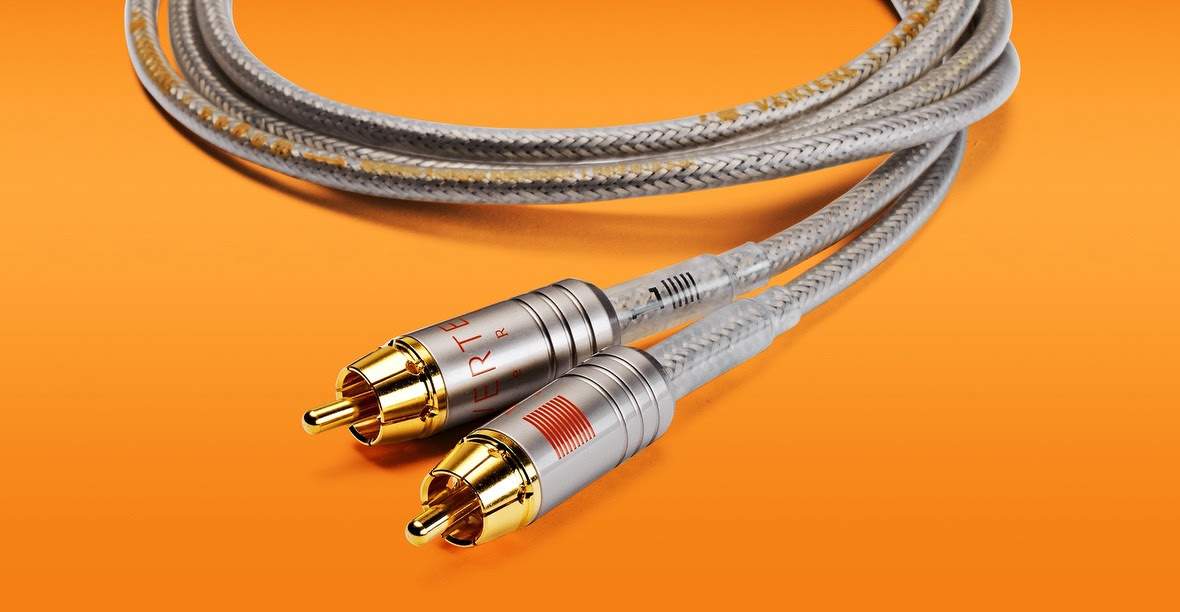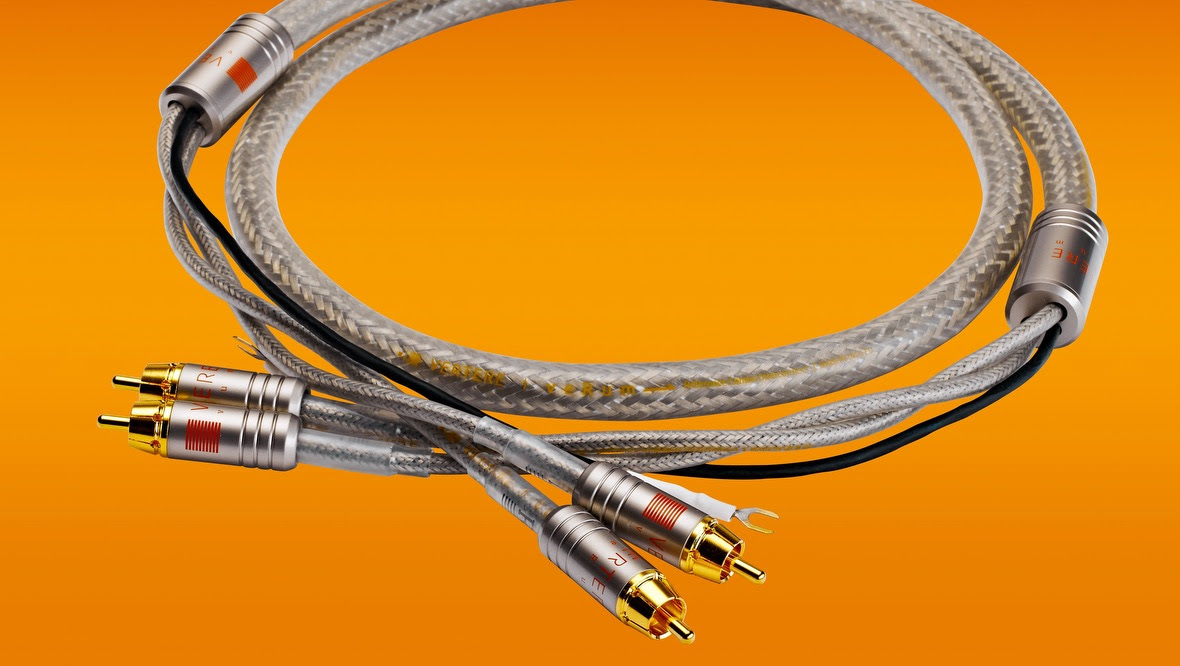NEWS
Vertere Acoustics Launches New VeRum Interconnect Cable
December 16, 2021
Press Release
|
Touraj Moghaddam Vertere's founder and chief designer today announced a new interconnect cable, VeRum. In the Vertere cable hierarchy, VeRum sits below Pulse HB and above RedLine. VeRum comes in two variants and is available to order now: VeRum - 1.5 m RCA/XLR interconnect cable which will sell for £2000, $2699 or €2348. Vertere's VeRum cable replaces Pulse R, always internally nicknamed HB light. Manufactured on precision machines with the most delicate tolerance cable manufacturing machinery in Europe. VeRum brings a large proportion of Pulse HB's neutrality, dynamics and even-handed performance without the high costs involved in being hugely labour intensive and using wire so delicate that four together are thinner than a human hair. |
||
 |
||
|
These precision machines assemble VeRum from multiple thicknesses of high purity copper wires, generally silver-plated. The various thicknesses of wires give flexibility to wiring depending on the signal requirement. For example, the output from a phono cartridge is at a signal level far below that of, say, a phono stage and is still preconditioned by the RIAA record equalisation. These two possibilities require different wiring to optimise signal transfer. The detail Each VeRum cable (one channel) includes:
These are together with a significantly thicker Pulse Earthline silver-plated high purity copper multistranded wire. A special foil shield surrounds these, covered by a dense tin-plated copper braid with a special PVC jacket. The multiple signal and return wires give flexibility. The wiring of many combinations is possible and allows different options for ground, earth, and shields. VeRum Solo includes two VeRum cables and a separate Special Ground/Power Conductor set. The extra set includes two tinned high-purity copper conductors with a PVC dielectric, shielded by a special foil and tinned copper braid, all enclosed in a PVC outer. Surrounding all three PVC enclosed wires is a cotton filler for damping and a final PVC outer jacket for protection. VeRum Solo has two obvious uses and possibly many others: a Tonearm to Phono stage cable with a much thicker than usual and screened ground cable and as a regular RCA or XLR cable with both channels held closely together for use in more RF noisy situations and where a separate ground may be advantageous. |
||
 |
||
|
Some background Any new cable launch is always going to create some controversy: some are convinced cables can make no audible difference to performance, some see cables as tone controls – suggesting the use of a bright sounding cable with a dull sounding system, and of course, some like to experiment to find a cable that they prefer. In Vertere's opinion, potential customers should try VeRum and decide for themselves. Touraj takes a different approach to cables in general -as those that know him would expect – he considers all cables to be less than ideal. The ideal connection between two hi-fi elements would be a short hard-wired connection but at the same time one that didn't transmit vibrational energy. Given this is impractical in most systems, cables are necessary. Consequently, the best cable is the one that does the least damage to the electromagnet wave transfer between elements. Every part of a cable: conductor; dielectric; size; thickness, strand number, and many more, including some even inconsequential seeming details, affects its ability to accurately pass electromagnetic waves from source to receiver in an identical manner. Back in the early 2000s, Touraj started to believe the most significant element holding back the performance of some of his high-end client's systems were the cables. Experimentation led to the design and subsequent hand-building of the Hand Built (HB) cables. These cables utilised multiple thicknesses, numbers of high-purity copper, usually silver-plated and with FEP dielectrics. Given the unique nature of the wires and assembly, these cables were extremely expensive. But customers kept coming to the point where Touraj designed Pulse R, a machine manufactured version to cope with demand. He will readily admit that although it wasn't quite as good as HB, it could be machine manufactured for a lower price due to the significantly reduced hand assembly time.
|
||
 |
||
|
Touraj explains the source of some of his background knowledge "Our collaboration with music industry engineers has given us invaluable insights into the art of cutting. This knowledge has enabled us to advance our record player design in many ways to extract the maximum from vinyl records. For example, with his recent remixes of the Beatles albums, Giles Martin – son of the late Sir George – used a Vertere MG-1 record player, including SG-1 tonearm and PHONO-1 preamplifier throughout to check and approve the acetates and the test pressings. And we've worked closely with the multi-award-winning mastering engineer Miles Showell: since February 2017. Miles has been using his own extensively customised Neumann VMS 80 lathe, incorporating Vertere cables, to cut normal and half-speed masters for the likes of ABBA, Cream, The Police and The Rolling Stones, and also the 50th-anniversary release of The Beatles' Sgt Pepper's Lonely Hearts Club Band and The Beatles (otherwise known as 'The White Album'). Working closely with Miles has led to the first releases on our record label Vertere Records. Releases: a three-track EP and first album by Scottish band Caezar, and the first album by Dutch singer/songwriter Elles Springs, which was specially tape-transferred and then half-speed mastered and cut by Miles for our label. It's only by involving ourselves at every stage of the record-making process that we can ensure our players bring you as close as possible to what the artists and engineers wanted you to hear." |
||
 |
||
|
For more info please contact: Steve Harris AudioPlus Communications Telephone: +44 20 335 50446 Email: steveh@audioplus.co.uk |

 then "Add to Home Screen"
then "Add to Home Screen"